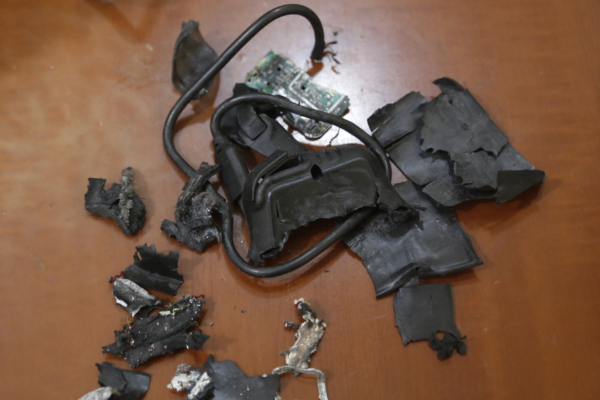Hezbollah suffered heavy losses in last month’s explosion of thousands of pagers in Lebanon, and the reason these pagers were able to evade inspection and ultimately strike their targets was mainly due to their unusual design.
According to Reuters, these pagers containing explosives had some special designs, with the batteries being the most deceptive.
First-hand information provided by Lebanese sources familiar with these pagers, as well as photos of dismantled battery packs seen by Reuters, indicate that the operatives who manufactured these pagers designed a battery housing a small but powerful amount of plastic explosives and a new type of detonator that cannot be detected by X-ray.
At first glance, the batteries of these pagers appear similar to the standard lithium-ion battery packs used in thousands of consumer electronics products, but in reality, these batteries have a unique concealed design with carefully disguised measures.
Sources and the provided photos reveal that a thin square sheet containing six grams of white PETN plastic explosives was squeezed between two rectangular batteries.
It is stated by the sources that there appears to be no residual space between the batteries in the photos, but in reality, a highly flammable material filled that space, serving as a detonator.
The photo shows this three-layer device inserted into a black plastic sleeve and packaged in a metal casing about the size of a matchbox.
Due to the absence of any metallic component, the material used for detonation has an advantage: like plastic explosives, it cannot be detected by X-ray.
Two sources said that Hezbollah began inspecting for explosives upon receiving these pagers in February, taking them to airports for scanner security checks to see if they would trigger any alarms. But there were no suspicious reports.
Two battery experts mentioned that since the explosives and packaging occupy about one-third of the volume, the battery pack carries only a small portion of energy.
Lebanese sources said Hezbollah had noticed that the batteries were draining faster than expected. However, this issue did not seem to be taken seriously because just a few hours before the attack, Hezbollah was still distributing pagers to its members.
On September 17, thousands of pagers exploded simultaneously in the southern suburbs of Beirut and other Hezbollah strongholds, resulting in 39 deaths and over 3,400 injuries from this attack and the walkie-talkie explosions that occurred the following day.
Reuters was unable to confirm where these devices were manufactured, and Israel neither denied nor confirmed any involvement.

